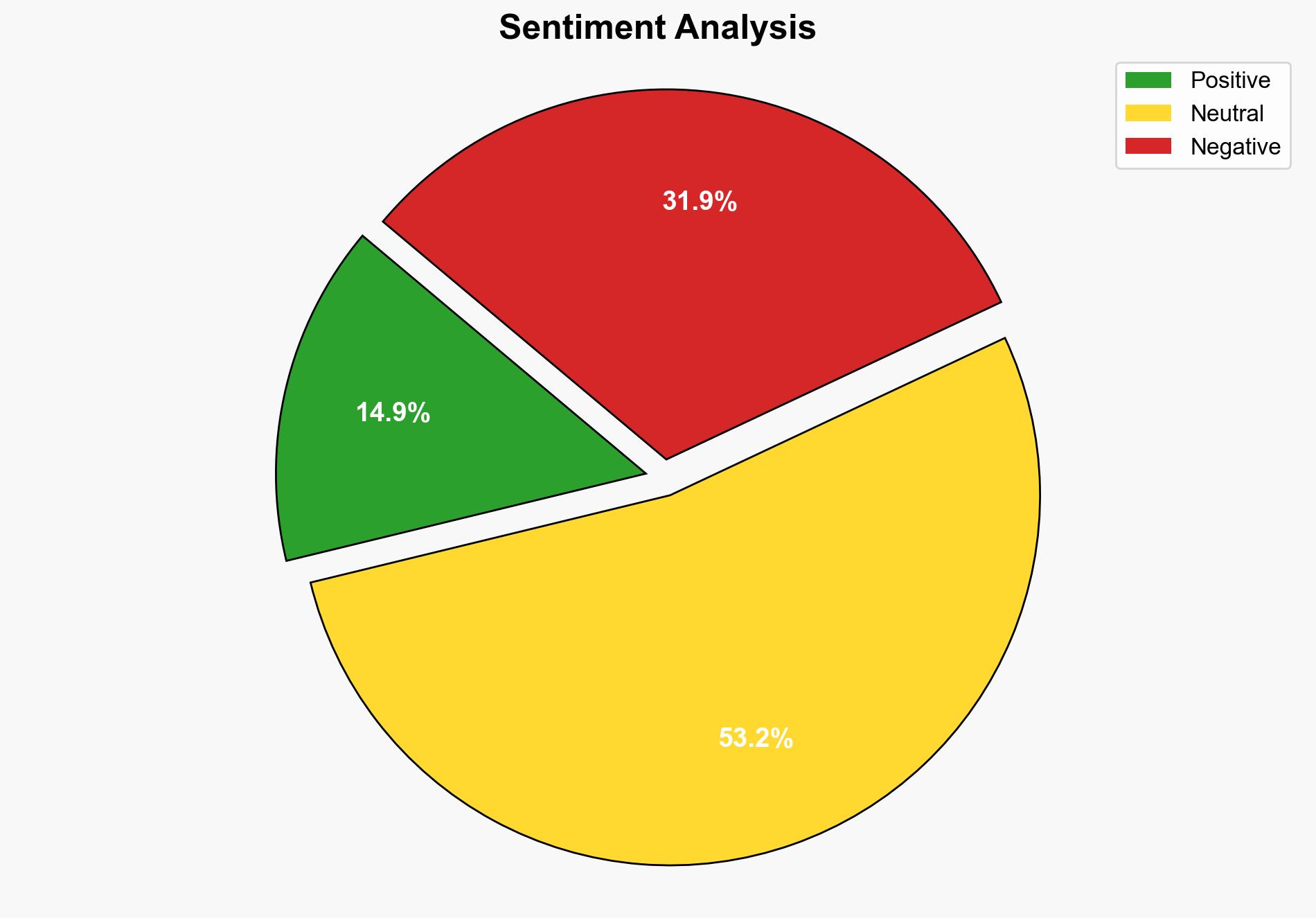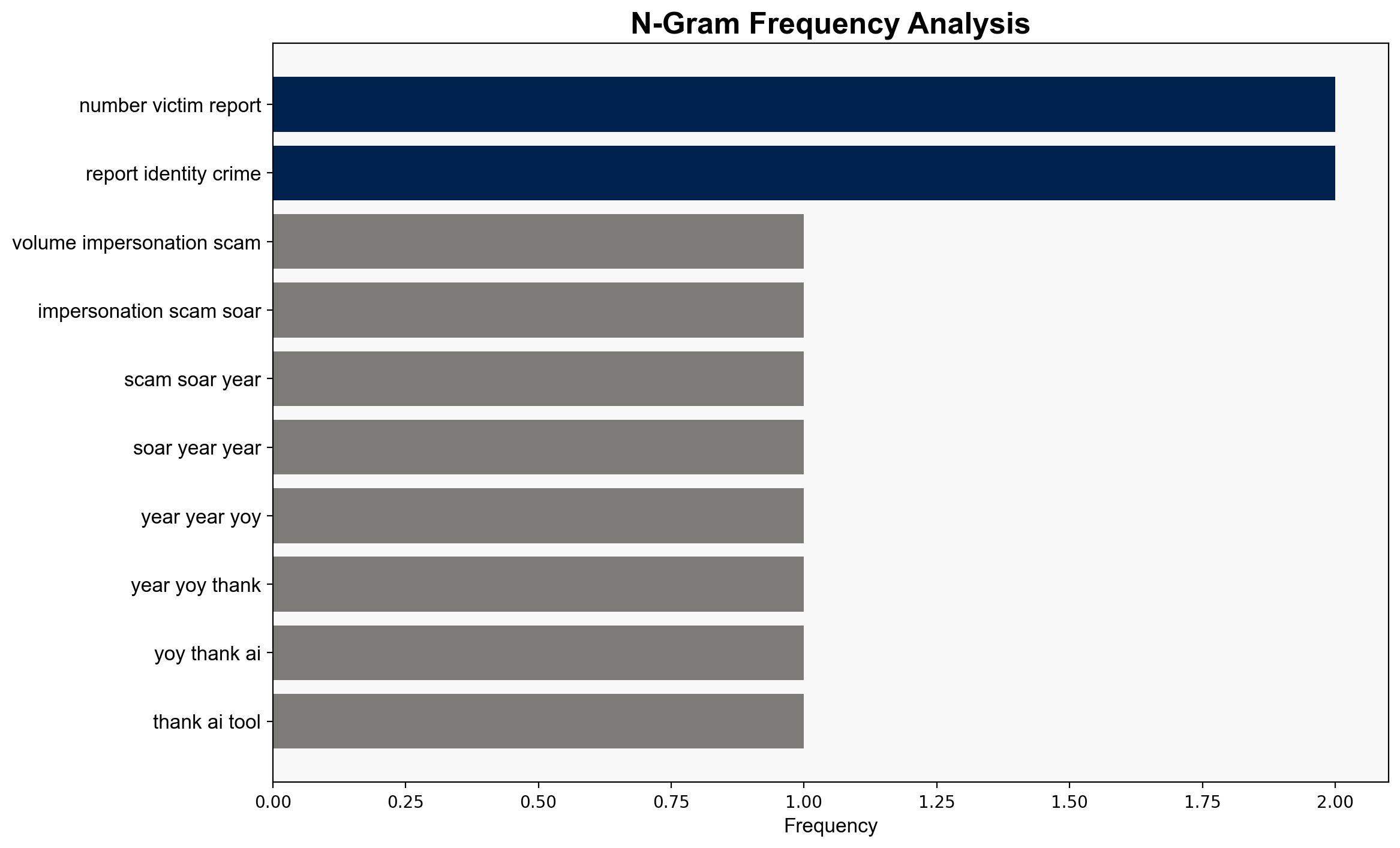Reported Impersonation Scams Surge 148 as AI Takes Hold – Infosecurity Magazine
Published on: 2025-06-24
Intelligence Report: Reported Impersonation Scams Surge 148 as AI Takes Hold – Infosecurity Magazine
1. BLUF (Bottom Line Up Front)
Impersonation scams have surged by 148%, driven by the increasing use of AI tools by cybercriminals. This trend poses significant risks to businesses, financial institutions, and consumers. Immediate action is required to enhance cybersecurity measures and public awareness. Key recommendations include strengthening AI-driven threat detection systems and increasing collaboration between public and private sectors to share intelligence on emerging threats.
2. Detailed Analysis
The following structured analytic techniques have been applied to ensure methodological consistency:
Adversarial Threat Simulation
Simulations reveal that AI tools are being leveraged to create sophisticated phishing emails and fake websites, increasing the success rate of impersonation scams.
Indicators Development
Key indicators include the rise in phishing attempts, the proliferation of fraudulent websites, and increased reports of identity theft linked to AI-enhanced scams.
Bayesian Scenario Modeling
Probabilistic models suggest a high likelihood of continued growth in AI-driven scams unless countermeasures are implemented promptly.
3. Implications and Strategic Risks
The surge in impersonation scams could undermine trust in digital communications and financial transactions, leading to economic losses and reputational damage for affected entities. The integration of AI into cybercrime tactics presents a systemic vulnerability that could be exploited across various sectors. Failure to address these risks may result in cascading effects, including increased regulatory scrutiny and potential geopolitical tensions if state actors are involved.
4. Recommendations and Outlook
- Enhance AI-driven threat detection and response systems to identify and neutralize emerging scams.
- Increase public awareness campaigns to educate consumers and businesses about the risks of impersonation scams and preventive measures.
- Foster collaboration between government agencies and private sector entities to share intelligence and develop unified strategies against AI-driven cyber threats.
- Scenario-based projections:
- Best Case: Rapid implementation of countermeasures reduces scam success rates by 50% within a year.
- Worst Case: Continued growth in scams leads to widespread financial losses and erosion of public trust in digital platforms.
- Most Likely: Incremental improvements in detection and prevention slow the growth of scams but do not eliminate the threat entirely.
5. Key Individuals and Entities
Eva Velasquez
6. Thematic Tags
national security threats, cybersecurity, identity theft, AI-driven scams, financial fraud





